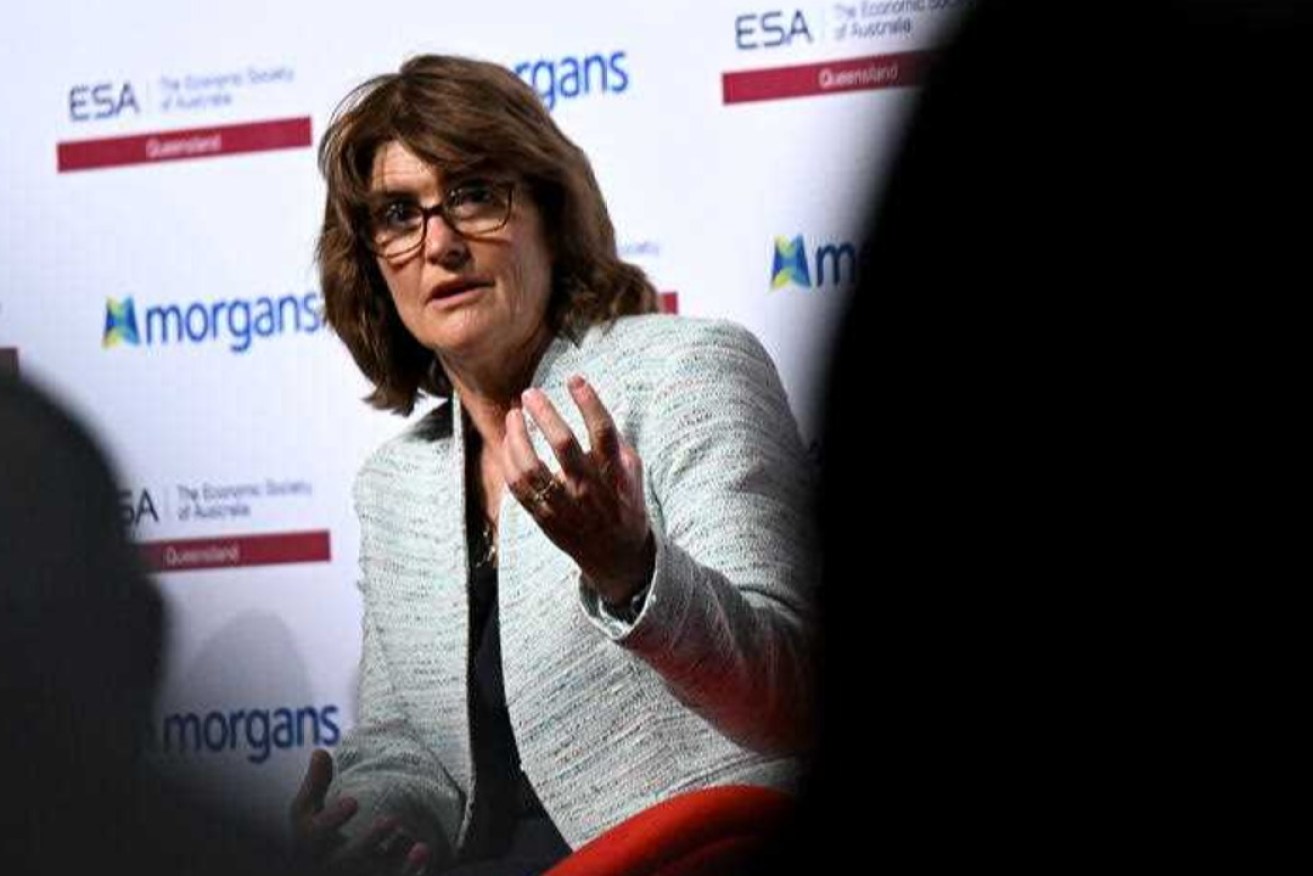Fuelling speculation on rate rises
No rate hike yet, but will it rise on Melbourne Cup Day? It all depends on petrol prices

RBA boss Michele Bullock said the conflicts in Ukraine and the Middle East could slow global growth. Photo: Darren England/AAP.
If the Reserve Bank does push up interest rates again, the most likely next date is its next board meeting, on Melbourne Cup Tuesday.
The November 7 meeting is especially important because it is one of four each year in which the board has the full set of quarterly staff forecasts before it, as well as the latest detailed quarterly breakdown of inflation.
For the moment, in its first meeting with the new governor Michele Bullock in the chair, the board decided on Tuesday to keep rates on hold, pointing to “uncertainty surrounding the economic outlook”.
It’s uncertain about what’s happening to China’s economy; it’s uncertain about the lagged effect of the 12 increases to date; and it’s suddenly less certain about inflation.
When the board last met, the official figures showed inflation falling. Not now. And not only in Australia.
Inflation has kicked back up
After sliding throughout the Western world, inflation edged up in the US and Canada in July and August, and in Australia in August.
In the US, annual inflation plummeted from a peak of 9.1 per cent to 3 per cent before edging back up to 3.7 per cent.
In Australia, the monthly measure of annual inflation dived from 8.4 per cent to 4.9 per cent before edging up to 5.2 per cent.
This means inflation is moving further away from, rather than closer to, the Reserve Bank’s 2-3 per cent target band.
The bank had been expecting it to keep falling to 4.1 per cent by the end of this year, then to fall further to 3.3 per cent – within spitting distance of its target – by the end of next year.
So what will Michele Bullock and her board do next time?
The first thing to consider (and they considered it in the first meeting under Michele Bullock on Tuesday) is what’s caused the uptick in inflation.
Petrol is fuelling inflation
Statistically, all of the uptick in inflation (yes, all of the uptick) was caused by an increase in one price – what the Bureau of Statistics calls automotive fuel, and what the rest of us call petrol and diesel.
Had that price not soared an astounding 9.1 per cent in one single month, August, the inflation rate for August would have remained steady at 4.9 per cent.
Absent automotive fuel, in recent months annual increases in the prices of food, clothes and electricity (yes, electricity) have fallen. In the last two months, the monthly increase in rents has inched down, suggesting that, as painful as high rent increases have been, they’ll eventually subside.
The second thing to consider is whether an uptick in inflation, resulting from an increase in the price of one commodity, is reason enough to return to pushing up interest rates.
Suddenly, petrol’s $2.20 per litre or more
Oil prices have shot up because in July one of the biggest producers, Saudi Arabia, began cutting production in what its energy minister said was “a bid to stabilise” the market.
Russia has joined in. The result – bolstered by a much lower Australian dollar – has been soaring prices. We’ve even seen new records set in some places, including Brisbane’s record unleaded price of $2.38.
Melbourne’s average price exceeded $2.20 a few weeks back and is still above $2.10.
Last year, when rocketing petrol and diesel prices were part of a widespread surge in inflation after Russia invaded Ukraine (and Australia temporally cut fuel excise to wind them back), what the Reserve Bank should do was clear: push up interest rates to take the heat out of consumer spending.
But it’s different now. Rising inflation isn’t widespread, and spending per consumer is collapsing.
In August, retail spending grew just 0.2%, at a time of rapid population growth and still rapid price growth. Over the year to August, total retail spending climbed just 1.5 per cent at a time when the population grew 2.2 per cent and prices climbed more than 5 per cent.
It means we are winding back spending, big time. And here’s the thing about the latest increase in petrol prices: it will wind back spending on things other than petrol even further.
Petrol could be fuelling “disinflation”
AMP chief economist Shane Oliver thinks the latest petrol price rises could be disinflationary. That’s right, “disinflationary”.
Just as a tax increase reduces the free money households have to spend and makes it harder for them to push up prices, an increase in the price of a purchase that’s near compulsory cuts the amount we have to spend on other things.
Offsetting this is the reality that petrol and diesel prices have risen. In time, those higher prices will feed through into higher prices for just about everything that is moved by trucks.
But the two – higher input prices and less price pressure from consumers – should to some extent offset each other, which is a reason for the Reserve Bank board to at least consider taking the latest uptick in inflation in its stride.
The announcement after Tuesday’s meeting postponed this consideration. By deciding to hold rates steady, the board said it could take “further time to assess the impact of the increase in interest rates to date and the economic outlook”.
The Reserve Bank board’s view about whether to treat what’s happening to petrol as inflationary or disinflationary (or neutral) will play an outsized role in the decision it makes about interest rates on November 7.![]()
Peter Martin, Visiting Fellow, Crawford School of Public Policy, Australian National University
This article is republished from The Conversation under a Creative Commons license. Read the original article.




